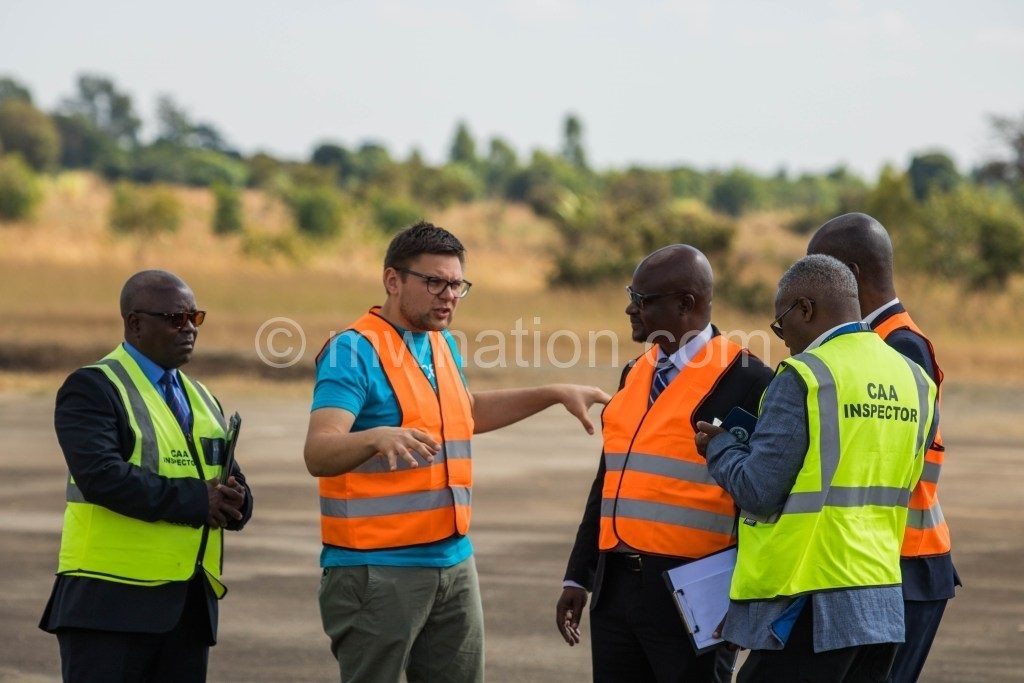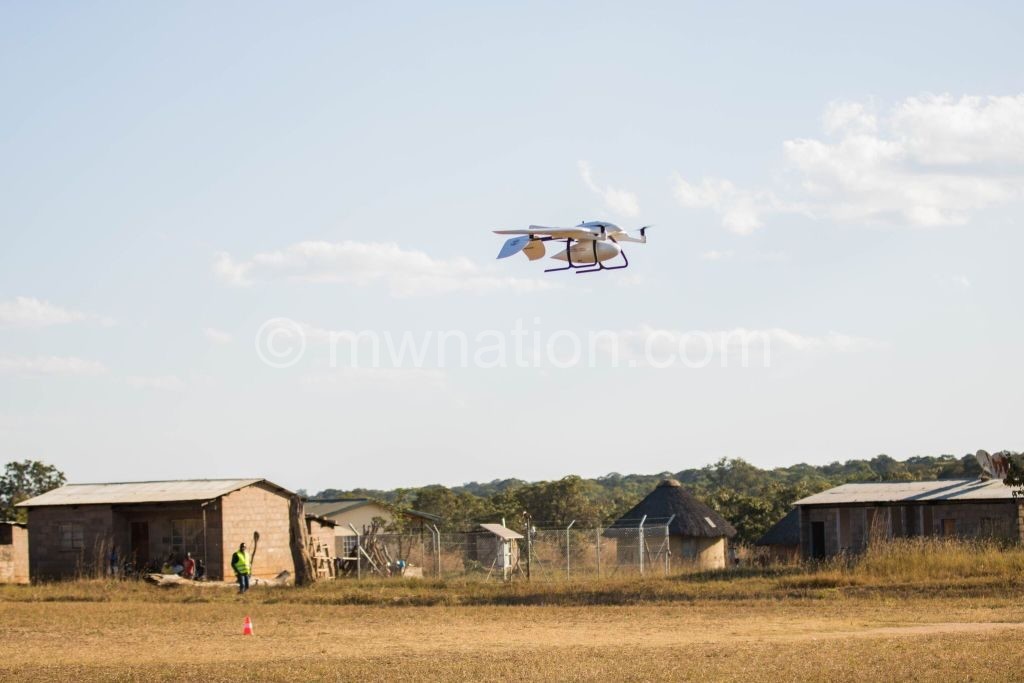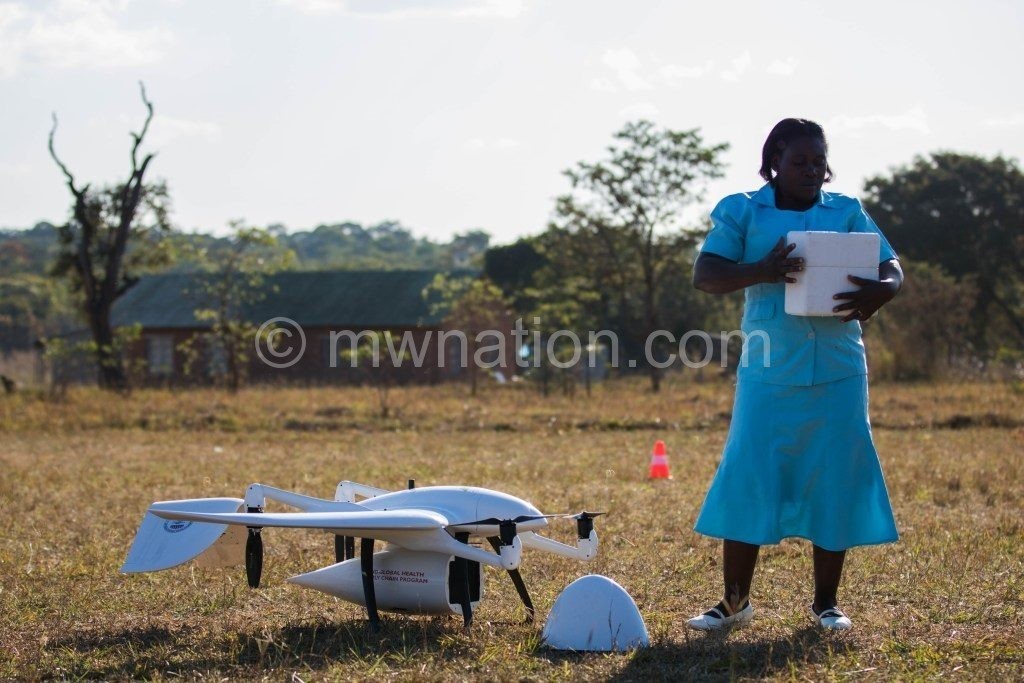Utilising drones to deliver health supplies
New health applications for drones and UAVs are being considered to mitigate logistical problems and make health-care distribution more affordable. LAUREN DAVITT writes:

The empty airfield, while devoid of planes, feels full of life and excitement. The breeze keeps a tattered orange wind sock moving. And in the distance, the sounds of young people playing at a nearby school fill the air, reminding everyone why we are here.
The Unicef Humanitarian Drone Corridor in Kasungu has been an innovation testing ground since it opened in 2016, in conjunction with the Government of Malawi.

Companies, universities and other partners can use the air strip to test drone projects that can one day be used to support humanitarian work and help save lives.
On this bright June day, something new is about to start; the longest drone test flights in Malawi are about to begin. And while these are final tests—a dress rehearsal of sorts—the implication of their success is extremely important for the future of humanitarian drones here in Malawi, and across the region.
After thorough pre-flight safety checks, the specially-designed drone buzzes to life with a whir that commands everyone’s attention.

After slowly gaining altitude, it takes off, making a wide, graceful turn before it flies out of sight. Its destination is the Lifupa health centre, around 55 kilometre (km) away (37 km in a straight line). By car, the dirt roads make it a bumpy 1 hour 30-minute drive through local villages.
The drone takes around 20-25 minutes to cover the distance, depending on winds. It gently lands in a football pitch adjacent to the health center, where community health worker Elizabeth Pemba is waiting.
With support from the local pilots, she opens the cargo container on the bottom of the drone and sees how medicine and vaccines will be insulated and stored when drone flights start regular service.
Elizabeth tells us how much drones can help her community, where she’s worked for 18 years. The remote location and high prevalence of malaria makes it hard to keep her neighbors healthy.
Being able to receive medicine and send samples quickly to the nearby hospital will make all the difference in ensuring that children and families get the care they need.
Ensuring proper care is all part of the plan, according to Scott Dubin, drones project lead for USAid’s Global Health Supply Chain-Procurement and Supply Management project (GHSC-PSM) project, implemented by Chemonics International and partners.
As part of the Supply Chain team, Scott and his colleagues have been working to scale-up drone technology to make it easier for healthcare workers like Elizabeth to support their communities.
The flight tests are only the first step in USAid’s project in Malawi, which will use drones to bring lifesaving deliveries to remote locations and collect laboratory samples for two-way deliveries.
The goal—as Scott explains—is to have drones be a regular conduit for health facilities, starting with HIV samples and treatment, and expanding from there.
“There is ample room for creative solutions in treating HIV in Malawi,” explains Judith Sherman, HIV lead for Unicef Malawi and originator of the Unicef drone programme. “The combination of high HIV rates and challenging infrastructure make drones an ideal tool to support our programme work. Unicef has been working with the government since 2015 to integrate drones into the health system, and we’re excited to see that HIV diagnosis and treatment, particularly for children, will soon be easier.”
And, as Scott explains, “The drone corridor made all the difference.” Unicef’s investment and partnership in drones for humanitarian response laid the groundwork for USAid’s project and has made Malawi a hotbed for innovation and data work, enabling organisations to come in and scale-up their pilot projects.
“Unicef’s Humanitarian Drone Corridor has evolved from an experimentation area and testing ground, to a gateway for implementation of large-scale projects around the country, explains Tautvydas Juskauskas, Unicef Malawi’s drone specialist.
“The Department of Civil Aviation, Unicef and partners are using the corridor extensively to ensure providers are technically, operationally and logistically ready to conduct flights in Malawi.
“In all of our work at the corridor, we want it to be practical and replicate real-life applications, like delivery of medical supplies or a mapping mission to identify flood-prone areas or mosquito breeding sites.”
Back in Lifupa, after just a few minutes on the ground—enough time to offload and re-load cargo and confirm safety protocols—the drone buzzes to life again. Children playing football nearby stop to watch before it takes off again. It heads back to the Kasungu airstrip to complete the longest bi-directional cargo flights in Malawi to date, around 76km total.
The success of these flights has gotten accolades from Malawi’s Department of Civil Aviation, a key partner in the ongoing drone work.
The next step is to bring regular drone flights to some of the hardest to reach places in the country, specifically, between Nkhata Bay on the mainland and remote Likoma Island in the middle of Lake Malawi.
Cargo drone deliveries will not only benefit citizens of Likoma in accessing more regular health care and supplies, it will also begin new chapter of drone work, that aims to benefit local engineers as well.
While the possibilities for drones as a means to support health and life in Malawi are endless, today, the team is focused on their success in Lifupa and the power of partnership that made it happen.
Unicef has been focused on finding the most innovative and creative solutions to save and protect children for over 70 years. Drone testing and ongoing implementation is a powerful testament to that lifesaving legacy. n
* Lauren Davitt is the interim chief of communications at Unicef Malawi





